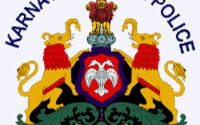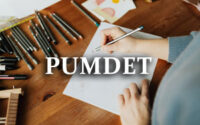SBI Junior Associates Reasoning Ability Question Papers for Prelims and Mains
1. Four of the following five are alike in a certain way and so form a group. Which is the one that does not belong to that group?
A. Rose
B. Jasmine
C. Hibiscus
D. Marigold
E. Lotus
2. In a certain code RAIL is written as 5796 and TAPE is written as 3748. How is PAIR written in that code?
A. 4795
B. 4785
C. 3795
D. 8795
E. None of these
3. In the following set of numbers, if ‘1’ is added to the last digit and then the order of digits is reversed, which number will be fourth if arranged in ascending order?
567 284 696 865 738
A. 567
B. 284
C. 696
D. 865
E. 738
4. How many such pairs of letters are there is the word PHYSICAL each of which has as many letters between them in the word as they have in the English alphabet?
A. None
B. One
C. Two
D. Three
E. None of these
5. Four of the following five are alike in a certain way on the basis of their positions in English alphabet and so form a group. Which is the one that does not belong to that group?
A. HJG
B. PQN
C. DEB
D. TUR
E. KLI
6. In a certain code DUPLICATE is written as MRVFJFVBE. How is CARTOUCHE written in that code?
A. UTBEPWDJF
B. UTBFQFJDW
C. UTBEQFJDW
D. UTBEPFJDW
E. None of these
7. In a row of children facing North, Ritesh is twelfth from the left end. Sudhir who is, twenty second from the right end is fourth td the right of Ritesh. Total how many children are there in the row?
A. 35
B. 36
C. 37
D. 34
E. None of these
8. If ‘A X B’ means ‘B is father of A’, ‘A + B’ means ‘A is wife of B’ and ‘A ÷ B’ means ‘A is brother of B’, then what is the relation of J with L in ‘J + H ÷ R X L’?
A. Daughter
B. Daughter-in-law
C. Sister-in-law
D. Cannot be determined
E. None of these
9. If in the word FLOURISH, all the vowels are first arranged alphabetically and then all the consonants are arranged alphabetically and then all the vowels are replaced by the previous letter and all the consonants are replaced by the next letter from English alphabet, which letter will be third from the right end?
A. I
B. S
C. M
D. V
E. None of these
10. How many meaningful English words can be formed from the letters ‘ACER’ using each letter only once in each word?
A. None
B. One
C. Two
D. Three
E. More than three
Direction (Q. 11 to 15) : In each of the questions below are given four statements followed by three conclusions numbered I, II & III. You have to take the given statements to be true even if they seem to be at variance from commonly known facts.
Read all the conclusions and then decide which of the given conclusions logically follows from the given statements disregarding commonly known facts.
11. Statements : All chillies are garlics. Some garlics are onions. All onions are potatoes. No potato is ginger.
Conclusions: I. No onion is ginger.
II. Some garlics are potatoes.
III. Some chillies are potatoes.
A. Only I follows
B. Only II follows
C. Only I & II follow
D. Only I & III follow
E. All follow
12. Statements : Some keys are locks. Some locks are numbers. All numbers are letters. All letters are words.
Conclusions : I. Some locks are letters.
II. Some words are numbers
III. All numbers are words.
A. Only I & II follow
B. Only II & III follow
C. Only I & III follow
D. Only I & either II or III follow
E. All follow
13. Statements : Some windows are doors. All doors are walls. No wall is roof. All roofs are shelters.
Conclusions : I. Some windows are walls.
II. No wall is shelter.
III. No door is shelter.
A. None follows
B. Only II & III follow
C. Only I & III follow
D. Only I follows
E. None of these
14. Statements : All bottles are jars. Some jars are pots. All pots are taps. No tap is tank.
Conclusions : I. No pot is tank.
II. Some jars are tanks.
III. Some bottles are pots.
A. Only I & III follow
B. Only I & II follow
C. Only II & III follow
D. All follow
E. None of these
15. Statements : Some fish are crocodiles. Some crocodiles are snakes. No snake is tortoise. All tortoises are frogs.
Conclusions : I. No snake is frog.
II. Some snakes are fish.
III. Some fish are frogs.
A. None of follows
B. Only I & II follow
C. Only II & III follow
D. Only I & III follow
E. None of these
Directions (Q. 16 to 20) : These questions are based on the following information
‘A @ B’ means ‘A is added to B’.
‘A * B’ means ‘A is multiplied by B’.
‘A # B’ means ‘A is divided by B’.
‘A $ B’ means ‘B is subtracted from A ‘.
In each questions, some information is given. You have to find out which expression correctly represented the statement.
16. Total age of 12 boys is and the total age of 13 girls is ‘Y’. What is the average age (A) of all the boys and girls together?
A. A = (X@Y)#25
B. A = (X$Y)#25
C. A = (X@Y)U25
D. Cannot be determined
E. None of these
17. Population of state M(P1) is less than half of population of state N(P2) by 1,50,000.
A. P2 = (P21#2)$150,000
B. P1 = (P2#2)@1,50,00
C. P1=(P2#2)$1,50,000
D. P2=(P #2)@1,50,000
E. None of these
18. Number of boys (B) in a class is equal to one-fourth of three times the number of girls (G) in the class.
A. B = (3#G)U4
B. B = (3UG)@4
C. B = (3UG)#4
D. B = (3$G)#4
E. None of these
19. Salary of Mr. X(S1) is more than 40% of Mr. Y’s salary (S2) by Rs. 8,000
A. S1=[S2U(40@100)]#800
B. S1=[S2U(40#100)]@800
C. S2 = [S1U(40#100)]@8000
D. S2 = [S1U(40@100)]#800
E. None of these
20. Marks obtained by Sujit in History (H) are 85% of his marks obtained in Science (M).
A. H = (100#85)*M
B. H = 85U100*rM
C. H = 85#100#M
D. H = (85#100)UM
E. None of these
Directions (Q. 21 to 25) : In the following questions the symbols @, #, $, @ and % are used with different meaning as follows.
‘P @ Q’ means ‘P is not smaller than Q’.
‘P #t Q’ means ‘P is not greater than Q’
‘P $ Q‘ means ‘P is neither greater than nor equal to Q’.
‘P © Q” means ‘P is neither smaller than nor equal to Q’.
‘P % Q’ means ‘P is neither greater than nor smaller than Q’.
Now in each of the following questions assuming the given statements to be true, find which of the two conclusions I and II given below them is/are definitely true ?
Give answer (A) if only Conclusion I is true.
Give answer (B) if only Conclusion II is true.
Give answer (C) if either Conclusion I or II is true.
Give answer (D) if neither Conclusion I nor II is true.
Give answer (E) if both Conclusions I and II are true.
21. Statements : V$W,W@T,T#H
Conclusions :
I. V©T
II. H%W
22. Statements: H©M,M@E,E$C
Conclusions:
I. C©M
II. H©E
23. Statements: N@J,J%R,R©H
Conclusions:
I. R#N
II. N©H
24. Statements: L@K,K©A,A$W
Conclusions
I. W$L
II. L#W
25. Statements: J#R,R©D,D@F
Conclusions:
I. F$R
II. F%R
Directions (Q. 26 to 30) : Study the following information carefully I0 answer these questions.
Eight friends J, K, L, M, N, O. P and Q are sitting around a circle facing the center. J is not the neighbour of N. L is third to the right of K. Q is second to the left of N who is next to the right of L. O is not the neighbour of N or K and is to the immediate left of P.
26. Which of the following is the correct position of L?
A. To the immediate right of N
B. To the immediate right of Q
C. To the immediate left of J
D. To the immediate left of Q
E. None of these
27. Which of the following pair of persons represent O’s neighbours?
A. L & K
B. P & K
C. M & P
D. N & P
E. None of these
28. Which of the following groups has the first person sitting between the other two persons?
A. PKJ
B. JQL
C. QNL
D. LMN
E. None of these
29. Who is to the immediate right of K?
A. J
B. P
C. Q
D. Cannot be determined
E. None of these
30. Who is to the immediate left of O?
A. P
B. L
C. Q
D. J
E. None of these



